poll運行效率的兩個瓶頸已經找出,現在的問題是怎么改進。首先,如果要監聽1000個fd,每次poll都要把1000個fd?拷入內核,太不科學了,內核干嘛不自己保存已經拷入的fd呢?答對了,epoll就是自己保存拷入的fd,它的API就已經說明了這一點——不是?epoll_wait的時候才傳入fd,而是通過epoll_ctl把所有fd傳入內核再一起"wait",這就省掉了不必要的重復拷貝。其次,在?epoll_wait時,也不是把current輪流的加入fd對應的設備等待隊列,而是在設備等待隊列醒來時調用一個回調函數(當然,這就需要“喚醒回調”機制),把產生事件的fd歸入一個鏈表,然后返回這個鏈表上的fd。
????另外,epoll機制實現了自己特有的文件系統eventpoll?filesystem
1.?內核數據結構
(1)?struct?eventpoll?{??
spinlock_t?lock;??
struct?mutex?mtx;??
wait_queue_head_t?wq;??/*?Wait?queue?used?by?sys_epoll_wait()?,調用epoll_wait()時,?我們就是"睡"在了這個等待隊列上*/
wait_queue_head_t?poll_wait;??/*?Wait?queue?used?by?file->poll()?,?這個用于epollfd本事被poll的時候*/
struct?list_head?rdllist;?/*?List?of?ready?file?descriptors,?所有已經ready的epitem都在這個鏈表里面*/?
structrb_root?rbr;?/*?RB?tree?root?used?to?store?monitored?fd?structs,?所有要監聽的epitem都在這里*/?
epitem?*ovflist;??/*存放的epitem都是我們在傳遞數據給用戶空間時監聽到了事件*/.
struct?user_struct?*user;?/*這里保存了一些用戶變量,比如fd監聽數量的最大值等*/??
};??
通過epoll_ctl接口加入該epoll描述符監聽的套接字則屬于socket?filesystem,這點一定要注意。每個添加的待監聽(這里監聽和listen調用不同)都對應于一個epitem結構體,該結構體已紅黑樹的結構組織,eventpoll結構中保存了樹的根節點(rbr成員)。同時有監聽事件到來的套接字的該結構以雙向鏈表組織起來,鏈表頭保存在eventpoll中(rdllist成員)。
/*?
*?Each?file?descriptor?added?to?the?eventpoll?interface?will??have?an?entry?of?this?type?linked?to?the?"rbr"?RB?tree.?
*/??
(2)?struct?epitem?{??
struct?rb_node?rbn;??????/*?RB?tree?node?used?to?link?this?structure?to?the?eventpoll?RB?tree?*/??
struct?list_head?rdllink;??/*?鏈表節點,?所有已經ready的epitem都會被鏈到eventpoll的rdllist中?*/?
struct?epitem?*next;??
struct?epoll_filefd?ffd;????/*?The?file?descriptor?information?this?item?refers?to?*/
int?nwait;???/*?Number?of?active?wait?queue?attached?to?poll?operations?*/
struct?list_head?pwqlist;??/*?List?containing?poll?wait?queues?*/??
struct?eventpoll?*ep;??/*?The?"container"?of?this?item?*/?
struct?list_head?fllink;?/*?List?header?used?to?link?this?item?to?the?"struct?file"?items?list?*/?
struct?epoll_event?event;???/*當前的epitem關系哪些events,?這個數據是調用epoll_ctl時從用戶態傳遞過來?*/?
};??
(3)?struct?epoll_filefd?{
struct?file?*file;
int?fd;};
(4)??struct?eppoll_entry?{?/*?Wait?structure?used?by?the?poll?hooks?*/
struct?list_head?llink;?/*?List?header?used?to?link?this?structure?to?the?"struct?epitem"?*/
struct?epitem?*base;?/*?The?"base"?pointer?is?set?to?the?container?"struct?epitem"?*/
wait_queue_t?wait;?/?Wait?queue?item?that?will?be?linked?to?the?target?file?wait?queue?head.?/
wait_queue_head_t?*whead;/The?wait?queue?head?that?linked?the?"wait"?wait?queue?item?*/
};//注:后兩項相當于等待隊列
(5)??struct?ep_pqueue?{/*?Wrapper?struct?used?by?poll?queueing?*/
poll_table?pt;???//?struct?poll_table是一個函數指針的包裹
struct?epitem?*epi;
};
(6)?struct?ep_send_events_data?{
/*?Used?by?the?ep_send_events()?function?as?callback?private?data?*/
int?maxevents;
struct?epoll_event?__user?*events;
};
各個數據結構的關系如下圖:

2.?函數調用分析
epoll函數調用關系全局圖:

3.?函數實現分析
3.1?eventpoll_init
epoll是個module,所以先看看module的入口eventpoll_init
[fs/eventpoll.c-->evetpoll_init()](簡化后)
?static?int?__init?eventpoll_init(void)
?{
?epi_cache?=?kmem_cache_create("eventpoll_epi",?sizeof(struct?epitem),
?0,?SLAB_HWCACHE_ALIGN|EPI_SLAB_DEBUG|SLAB_PANIC,?NULL,?NULL);
pwq_cache?=?kmem_cache_create("eventpoll_pwq",
?sizeof(struct?eppoll_entry),?0,?EPI_SLAB_DEBUG|SLAB_PANIC,?NULL,?NULL);
?//注冊了一個新的文件系統,叫"eventpollfs"
error?=?register_filesystem(&eventpoll_fs_type);
eventpoll_mnt?=?kern_mount(&eventpoll_fs_type);;
?}
很有趣,這個module在初始化時注冊了一個新的文件系統,叫"eventpollfs"(在eventpoll_fs_type結構里),然后掛載此文件系統。另外創建兩個內核cache(在內核編程中,如果需要頻繁分配小塊內存,應該創建kmem_cahe來做“內存池”),分別用于存放struct?epitem和eppoll_entry。
現在想想epoll_create為什么會返回一個新的fd?因為它就是在這個叫做"eventpollfs"的文件系統里創建了一個新文件!如下:
3.2?sys_epoll_create
[fs/eventpoll.c-->sys_epoll_create()]
?asmlinkage?long?sys_epoll_create(int?size)
?{
?int?error,?fd;
?struct?inode?*inode;
?struct?file?*file;
?error?=?ep_getfd(&fd,?&inode,?&file);
?/*?Setup?the?file?internal?data?structure?(?"struct?eventpoll"?)?*/
?error?=?ep_file_init(file);
}
函數很簡單,其中ep_getfd看上去是“get”,其實在第一次調用epoll_create時,它是要創建新inode、新的file、新的fd。而ep_file_init則要創建一個struct?eventpoll結構,并把它放入file->private_data,注意,這個private_data后面還要用到的。

3.3?epoll_ctl
epoll_create好了,該epoll_ctl了,我們略去判斷性的代碼:
[fs/eventpoll.c-->sys_epoll_ctl()]
?asmlinkage?long
?sys_epoll_ctl(int?epfd,?int?op,?int?fd,?struct?epoll_event?__user?*event)
?{
?struct?file?*file,?*tfile;
?struct?eventpoll?*ep;
?struct?epitem?*epi;
?struct?epoll_event?epds;
....
?epi?=?ep_find(ep,?tfile,?fd);//tfile存放要監聽的fd對應在rb-tree中的epitem
?switch?(op)?{//省略了判空處理
?case?EPOLL_CTL_ADD:?epds.events?|=?POLLERR?|?POLLHUP;
error?=?ep_insert(ep,?&epds,?tfile,?fd);?break;
?case?EPOLL_CTL_DEL:?error?=?ep_remove(ep,?epi);?break;
?case?EPOLL_CTL_MOD:?epds.events?|=?POLLERR?|?POLLHUP;
error?=?ep_modify(ep,?epi,?&epds);?break;
?}
????原來就是在一個“大的結構”(struct?eventpoll)里先ep_find,如果找到了struct?epitem,而根據用戶操作是ADD、DEL、MOD調用相應的函數,這些函數在epitem組成紅黑樹中增加、刪除、修改相應節點(每一個監聽fd對應一個節點)。很直白。那這個“大結構”是什么呢?看ep_find的調用方式,ep參數應該是指向這個“大結構”的指針,再看ep?=?file->private_data,我們才明白,原來這個“大結構”就是那個在epoll_create時創建的struct?eventpoll,具體再看看ep_find的實現,發現原來是struct?eventpoll的rbr成員(struct?rb_root),原來這是一個紅黑樹的根!而紅黑樹上掛的都是struct?epitem。
????現在清楚了,一個新創建的epoll文件帶有一個struct?eventpoll結構,這個結構上再掛一個紅黑樹,而這個紅黑樹就是每次epoll_ctl時fd存放的地方!

3.4?sys_epoll_wait
現在數據結構都已經清楚了,我們來看最核心的:
[fs/eventpoll.c-->sys_epoll_wait()]
?asmlinkage?long?sys_epoll_wait(int?epfd,?struct?epoll_event?__user?*events,?int?maxevents,?
int?timeout)
?{
?struct?file?*file;
?struct?eventpoll?*ep;
?/*?Get?the?"struct?file?*"?for?the?eventpoll?file?*/
?file?=?fget(epfd);
/*
?*?We?have?to?check?that?the?file?structure?underneath?the?fd
?*?the?user?passed?to?us?_is_?an?eventpoll?file.(所以如果這里是普通的文件fd會出錯)
?*/
?if?(!IS_FILE_EPOLL(file))
?goto?eexit_2;
ep?=?file->private_data;
?error?=?ep_poll(ep,?events,?maxevents,?timeout);
……
}
故伎重演,從file->private_data中拿到struct?eventpoll,再調用ep_poll
3.5?ep_poll()
[fs/eventpoll.c-->sys_epoll_wait()->ep_poll()]
?static?int?ep_poll(struct?eventpoll?*ep,?struct?epoll_event?__user?*events,?int?maxevents,
long?timeout)
?{
?int?res;
?wait_queue_t?wait;//等待隊列項
?if?(list_empty(&ep->rdllist))?{
?//ep->rdllist存放的是已就緒(read)的fd,為空時說明當前沒有就緒的fd,所以需要將當前
?init_waitqueue_entry(&wait,?current);//創建一個等待隊列項,并使用當前進程(current)初始化
?add_wait_queue(&ep->wq,?&wait);//將剛創建的等待隊列項加入到ep中的等待隊列(即將當前進程添加到等待隊列)
?for?(;;)?{
?/*將進程狀態設置為TASK_INTERRUPTIBLE,因為我們不希望這期間ep_poll_callback()發信號喚醒進程的時候,進程還在sleep?*/
?set_current_state(TASK_INTERRUPTIBLE);
?if?(!list_empty(&ep->rdllist)?||?!jtimeout)//如果ep->rdllist非空(即有就緒的fd)或時間到則跳???????????????????????????出循環
break;
?if?(signal_pending(current))?{
?res?=?-EINTR;
?break;
?}
?}
?remove_wait_queue(&ep->wq,?&wait);//將等待隊列項移出等待隊列(將當前進程移出)
?set_current_state(TASK_RUNNING);
?}
....
又是一個大循環,不過這個大循環比poll的那個好,因為仔細一看——它居然除了睡覺和判斷ep->rdllist是否為空以外,啥也沒做!什么也沒做當然效率高了,但到底是誰來讓ep->rdllist不為空呢?答案是ep_insert時設下的回調函數.

3.6?ep_insert()
[fs/eventpoll.c-->sys_epoll_ctl()-->ep_insert()]
static?int?ep_insert(struct?eventpoll?*ep,?struct?epoll_event?*event,?struct?file?*tfile,?int?fd)
{
struct?epitem?*epi;
?struct?ep_pqueue?epq;//?創建ep_pqueue對象
epi?=?EPI_MEM_ALLOC();//分配一個epitem
/*?初始化這個epitem?...?*/
?epi->ep?=?ep;//將創建的epitem添加到傳進來的struct?eventpoll
/*后幾行是設置epitem的相應字段*/
?EP_SET_FFD(&epi->ffd,?tfile,?fd);//將要監聽的fd加入到剛創建的epitem
?epi->event?=?*event;
?epi->nwait?=?0;
/*?Initialize?the?poll?table?using?the?queue?callback?*/
epq.epi?=?epi;??//將一個epq和新插入的epitem(epi)關聯
//下面一句等價于&(epq.pt)->qproc?=?ep_ptable_queue_proc;
init_poll_funcptr(&epq.pt,?ep_ptable_queue_proc);
revents?=?tfile->f_op->poll(tfile,?&epq.pt);??//tfile代表target?file,即被監聽的文件,poll()返回就緒事件的掩碼,賦給revents.
list_add_tail(&epi->fllink,?&tfile->f_ep_links);//?每個文件會將所有監聽自己的epitem鏈起來
ep_rbtree_insert(ep,?epi);//?都搞定后,?將epitem插入到對應的eventpoll中去
……
}
緊接著?tfile->f_op->poll(tfile,?&epq.pt)其實就是調用被監控文件(epoll里叫“target?file”)的poll方法,而這個poll其實就是調用poll_wait(還記得poll_wait嗎?每個支持poll的設備驅動程序都要調用的),最后就是調用ep_ptable_queue_proc。(注:f_op->poll()一般來說只是個wrapper,?它會調用真正的poll實現,?拿UDP的socket來舉例,?這里就是這樣的調用流程:?f_op->poll(),?sock_poll(),?udp_poll(),?datagram_poll(),?sock_poll_wait()。)這是比較難解的一個調用關系,因為不是語言級的直接調用。ep_insert還把struct?epitem放到struct?file里的f_ep_links連表里,以方便查找,struct?epitem里的fllink就是擔負這個使命的。
3.7?ep_ptable_queue_proc
[fs/eventpoll.c-->ep_ptable_queue_proc()]
static?void?ep_ptable_queue_proc(struct?file?*file,?wait_queue_head_t?*whead,?poll_table?*pt)
{
?struct?epitem?*epi?=?EP_ITEM_FROM_EPQUEUE(pt);
?struct?eppoll_entry?*pwq;
if?(epi->nwait?>=?0?&&?(pwq?=?PWQ_MEM_ALLOC()))?{
?init_waitqueue_func_entry(&pwq->wait,?ep_poll_callback);
?pwq->whead?=?whead;
?pwq->base?=?epi;
?add_wait_queue(whead,?&pwq->wait);
?list_add_tail(&pwq->llink,?&epi->pwqlist);
?epi->nwait++;
?}?else?{
?/*?We?have?to?signal?that?an?error?occurred?*/
?epi->nwait?=?-1;
?}
?}
????上面的代碼就是ep_insert中要做的最重要的事:創建struct?eppoll_entry,設置其喚醒回調函數為ep_poll_callback,然后加入設備等待隊列(注意這里的whead就是上一章所說的每個設備驅動都要帶的等待隊列)。只有這樣,當設備就緒,喚醒等待隊列上的等待進程時,ep_poll_callback就會被調用。每次調用poll系統調用,操作系統都要把current(當前進程)掛到fd對應的所有設備的等待隊列上,可以想象,fd多到上千的時候,這樣“掛”法很費事;而每次調用epoll_wait則沒有這么羅嗦,epoll只在epoll_ctl時把current掛一遍(這第一遍是免不了的)并給每個fd一個命令“好了就調回調函數”,如果設備有事件了,通過回調函數,會把fd放入rdllist,而每次調用epoll_wait就只是收集rdllist里的fd就可以了——epoll巧妙的利用回調函數,實現了更高效的事件驅動模型。
????現在我們猜也能猜出來ep_poll_callback會干什么了——肯定是把紅黑樹(ep->rbr)上的收到event的epitem(代表每個fd)插入ep->rdllist中,這樣,當epoll_wait返回時,rdllist里就都是就緒的fd了!
3.8?ep_poll_callback
[fs/eventpoll.c-->ep_poll_callback()]
static?int?ep_poll_callback(wait_queue_t?*wait,?unsigned?mode,?int?sync,?void?*key)
{
?int?pwake?=?0;
?struct?epitem?*epi?=?EP_ITEM_FROM_WAIT(wait);
?struct?eventpoll?*ep?=?epi->ep;
?/*?If?this?file?is?already?in?the?ready?list?we?exit?soon?*/
?if?(EP_IS_LINKED(&epi->rdllink))
?goto?is_linked;
?list_add_tail(&epi->rdllink,?&ep->rdllist);
?is_linked:
?/*
?*?Wake?up?(?if?active?)?both?the?eventpoll?wait?list?and?the?->poll()
?*?wait?list.
?*/
?if?(waitqueue_active(&ep->wq))
?wake_up(&ep->wq);
?if?(waitqueue_active(&ep->poll_wait))
?pwake++;
?}

4.?epoll獨有的EPOLLET
EPOLLET是epoll系統調用獨有的flag,ET就是Edge?Trigger(邊緣觸發)的意思,具體含義和應用大家可google之。有了EPOLLET,重復的事件就不會總是出來打擾程序的判斷,故而常被使用。那EPOLLET的原理是什么呢?
????上篇我們講到epoll把fd都掛上一個回調函數,當fd對應的設備有消息時,回調函數就把fd放入rdllist鏈表,這樣epoll_wait只要檢查這個rdllist鏈表就可以知道哪些fd有事件了。我們看看ep_poll的最后幾行代碼:
4.1?ep_poll()????(接3.5)
[fs/eventpoll.c->ep_poll()]
/*?Try?to?transfer?events?to?user?space.?*/
?ep_events_transfer(ep,?events,?maxevents)
?......
把rdllist里的fd拷到用戶空間,這個任務是ep_events_transfer做的.
4.2?ep_events_transfer
[fs/eventpoll.c->ep_events_transfer()]
?static?int?ep_events_transfer(struct?eventpoll?*ep,?struct?epoll_event?__user?*events,?
int?maxevents)
{
int?eventcnt?=?0;
struct?list_head?txlist;
INIT_LIST_HEAD(&txlist);
/*?Collect/extract?ready?items?*/
if?(ep_collect_ready_items(ep,?&txlist,?maxevents)?>?0)?{
/*?Build?result?set?in?userspace?*/
eventcnt?=?ep_send_events(ep,?&txlist,?events);
/*?Reinject?ready?items?into?the?ready?list?*/
ep_reinject_items(ep,?&txlist);
}
up_read(&ep->sem);
return?eventcnt;
}
????代碼很少,其中ep_collect_ready_items把rdllist里的fd挪到txlist里(挪完后rdllist就空了),接著ep_send_events把txlist里的fd拷給用戶空間,然后ep_reinject_items把一部分fd從txlist里“返還”給rdllist以便下次還能從rdllist里發現它。
其中ep_send_events的實現:
4.3?ep_send_events()
[fs/eventpoll.c->ep_send_events()]
static?int?ep_send_events(struct?eventpoll?*ep,?struct?list_head?*txlist,
struct?epoll_event?__user?*events)
{
int?eventcnt?=?0;
unsigned?int?revents;
struct?list_head?*lnk;
struct?epitem?*epi;
list_for_each(lnk,?txlist)?{
epi?=?list_entry(lnk,?struct?epitem,?txlink);
revents?=?epi->ffd.file->f_op->poll(epi->ffd.file,?NULL);//調用每個監聽文件的poll方法獲取就緒事件(掩碼),并賦值給revents
epi->revents?=?revents?&?epi->event.events;
if?(epi->revents)?{
?????if?(__put_user(epi->revents,?&events[eventcnt].events)?||?__put_user(epi->event.data,
?????&events[eventcnt].data))//將event從內核空間發送到用戶空間
?????return?-EFAULT;
????if?(epi->event.events?&?EPOLLONESHOT)
????epi->event.events?&=?EP_PRIVATE_BITS;
????eventcnt++;
?????}?????}
????return?eventcnt;?}
????這個拷貝實現其實沒什么可看的,但是請注意紅色的一行,這個poll很狡猾,它把第二個參數置為NULL來調用。我們先看一下設備驅動通常是怎么實現poll的:
static?unsigned?int?scull_p_poll(struct?file?*filp,?poll_table?*wait)
{
struct?scull_pipe?*dev?=?filp->private_data;
unsigned?int?mask?=?0;
poll_wait(filp,?&dev->inq,?wait);
poll_wait(filp,?&dev->outq,?wait);
if?(dev->rp?!=?dev->wp)
mask?|=?POLLIN?|?POLLRDNORM;?/*?readable?*/
if?(spacefree(dev))
mask?|=?POLLOUT?|?POLLWRNORM;?/*?writable?*/
return?mask;
}
????上面這段代碼摘自《linux設備驅動程序(第三版)》,絕對經典,設備先要把current(當前進程)掛在inq和outq兩個隊列上(這個“掛”操作是wait回調函數指針做的),然后等設備來喚醒,喚醒后就能通過mask拿到事件掩碼了(注意那個mask參數,它就是負責拿事件掩碼的)。那如果wait為NULL,poll_wait會做些什么呢?
4.4?poll_wait
[include/linux/poll.h->poll_wait]
?static?inline?void?poll_wait(struct?file?*?filp,?wait_queue_head_t?*?wait_address,poll_table?*p)
?{
????if?(p?&&?wait_address)
????p->qproc(filp,?wait_address,?p);
?}
喏,看見了,如果poll_table為空,什么也不做。我們倒回ep_send_events,那句標紅的poll,實際上就是“我不想休眠,我只想拿到事件掩碼”的意思。然后再把拿到的事件掩碼拷給用戶空間。ep_send_events完成后,就輪到ep_reinject_items了。
4.5?p_reinject_items
[fs/eventpoll.c->ep_reinject_items]
static?void?ep_reinject_items(struct?eventpoll?*ep,?struct?list_head?*txlist)
{
?????int?ricnt?=?0,?pwake?=?0;
?????unsigned?long?flags;
?????struct?epitem?*epi;
?????while?(!list_empty(txlist))?{//遍歷txlist(此時txlist存放的是已就緒的epitem)
?????epi?=?list_entry(txlist->next,?struct?epitem,?txlink);
?????EP_LIST_DEL(&epi->txlink);//將當前的epitem從txlist中刪除
?????if?(EP_RB_LINKED(&epi->rbn)?&&?!(epi->event.events?&?EPOLLET)?&&
?????(epi->revents?&?epi->event.events)?&&?!EP_IS_LINKED(&epi->rdllink))?{
list_add_tail(&epi->rdllink,?&ep->rdllist);//將當前epitem重新加入ep->rdllist
?????ricnt++;//?ep->rdllist中epitem的個數(即從新加入就緒的epitem的個數)
??????}
????}
?if?(ricnt)?{//如果ep->rdllist不空,重新喚醒等、等待隊列的進程(current)
????if?(waitqueue_active(&ep->wq))
????wake_up(&ep->wq);
????if?(waitqueue_active(&ep->poll_wait))
????pwake++;
????}
???……
}
ep_reinject_items把txlist里的一部分fd又放回rdllist,那么,是把哪一部分fd放回去呢?看上面那個判斷——是那些“沒有標上EPOLLET(即默認的LT)”(標紅代碼)且“事件被關注”(標藍代碼)的fd被重新放回了rdllist。那么下次epoll_wait當然會又把rdllist里的fd拿來拷給用戶了。舉個例子。假設一個socket,只是connect,還沒有收發數據,那么它的poll事件掩碼總是有POLLOUT的(參見上面的驅動示例),每次調用epoll_wait總是返回POLLOUT事件(比較煩),因為它的fd就總是被放回rdllist;假如此時有人往這個socket里寫了一大堆數據,造成socket塞住(不可寫了),那么標藍色的判斷就不成立了(沒有POLLOUT了),fd不會放回rdllist,epoll_wait將不會再返回用戶POLLOUT事件。現在我們給這個socket加上EPOLLET,然后connect,沒有收發數據,此時,標紅的判斷又不成立了,所以epoll_wait只會返回一次POLLOUT通知給用戶(因為此fd不會再回到rdllist了),接下來的epoll_wait都不會有任何事件通知了。
總結:
epoll函數調用關系全局圖:

注:上述函數關系圖中有個問題,當ep_reinject_items()將LT的上次就緒的eptiem重新放回就緒鏈表,下次ep_poll()直接返回,這不就造成了一個循環了嗎?什么時候這些LT的epitem才不再加入就緒鏈表呢?這個問題的解決在4.3——ep_send_events()中,注意這個函數中標紅的那個poll調用,我們分析過當傳入NULL時,poll僅僅是拿到事件掩碼,所以如果之前用戶對事件的處理導致的文件的revents(狀態)改變,那么這里就會得到更新。例如:用戶以可讀監聽,當讀完數據后文件的會變為不可讀,這時ep_send_events()中獲取的revents中將不再有可讀事件,也就不滿足ep_reinject_items()中的藍色判斷,所以epitem不再被加入就緒鏈表(ep->rdllist)。但是如果只讀部分數據,并不會引起文件狀態改變(文件仍可讀),所以仍會加入就緒鏈表通知用戶空間,這也就是如果是TL,就會一直通知用戶讀事件,直到某些操作導致那個文件描述符不再為就緒狀態了(比如,你在發送,接收或者接收請求,或者發送接收的數據少于一定量時導致了一個EWOULDBLOCK?錯誤)。
將上述調用添加到函數調用關系圖后,如下(添加的為藍線):

epoll實現數據結構全局關系圖:


?
 電子發燒友App
電子發燒友App











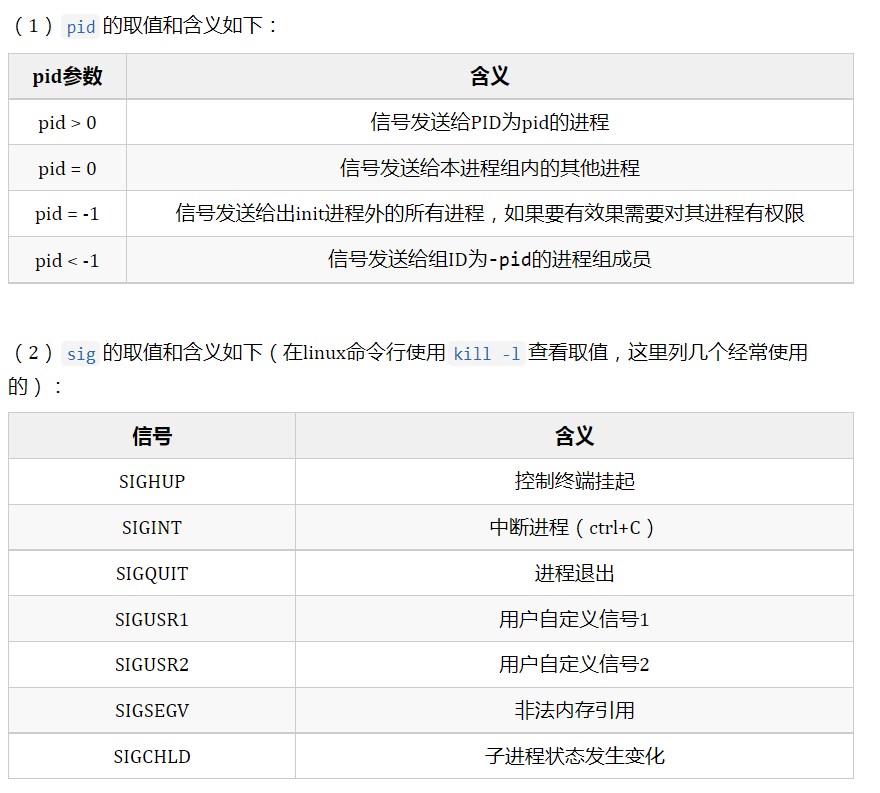

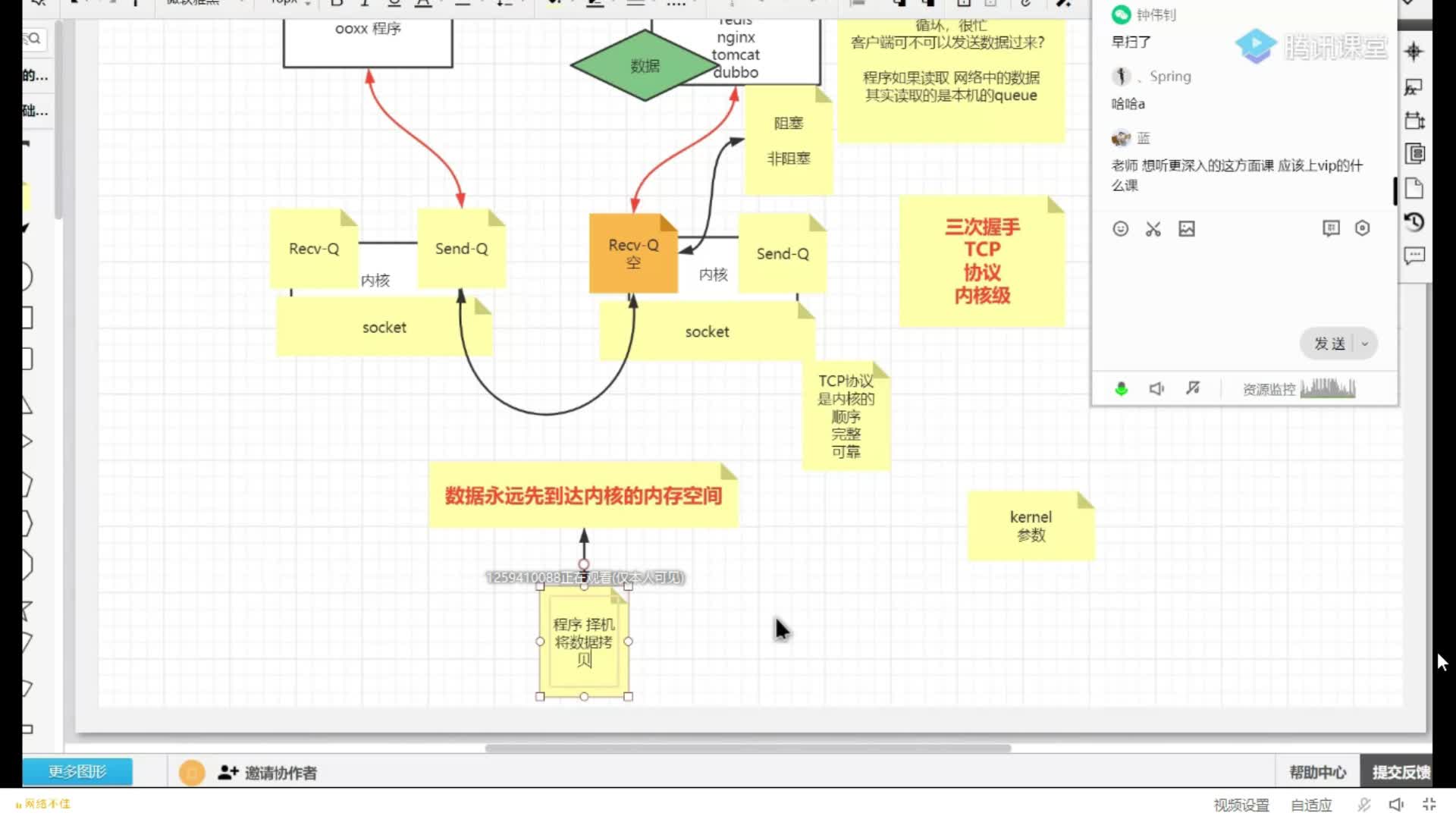
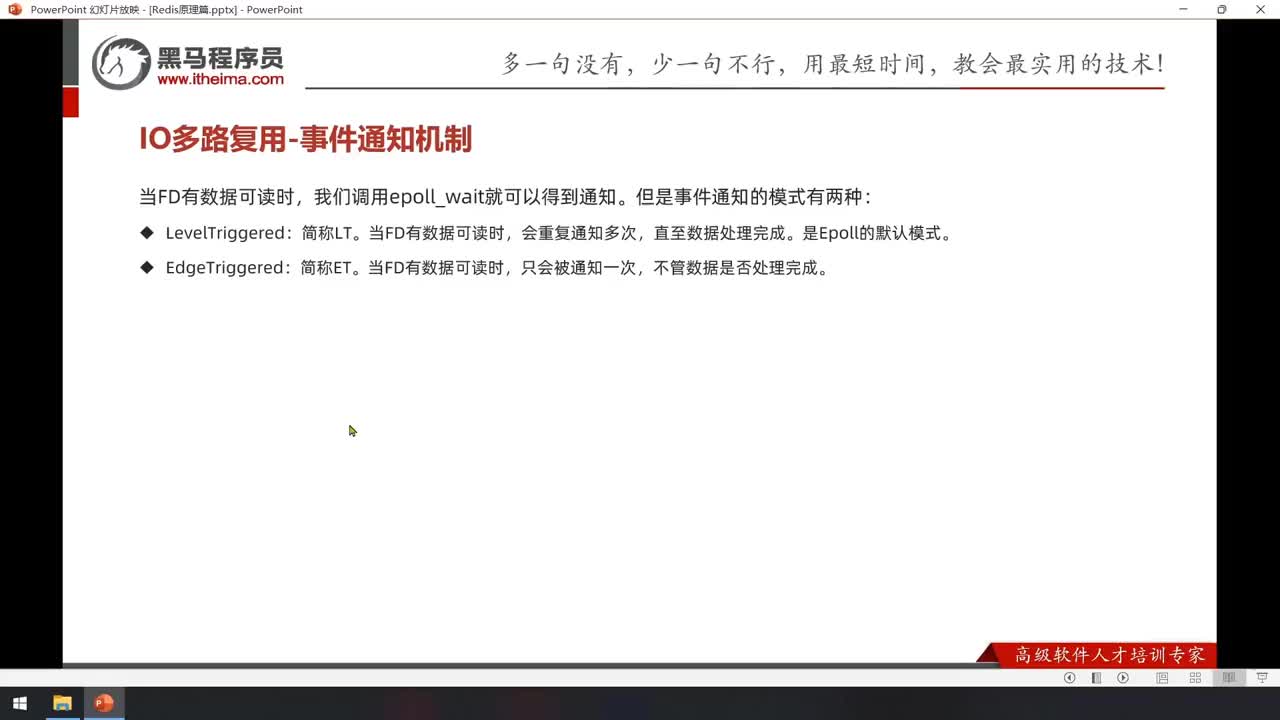
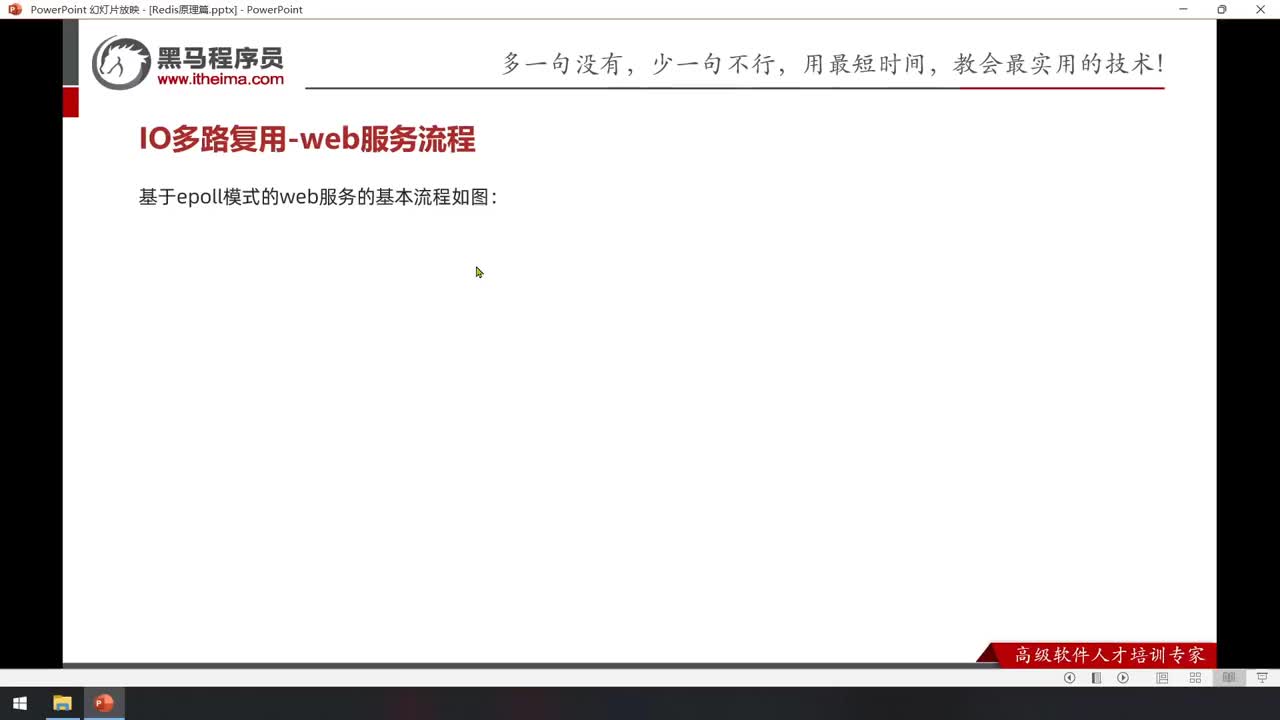
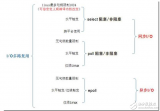











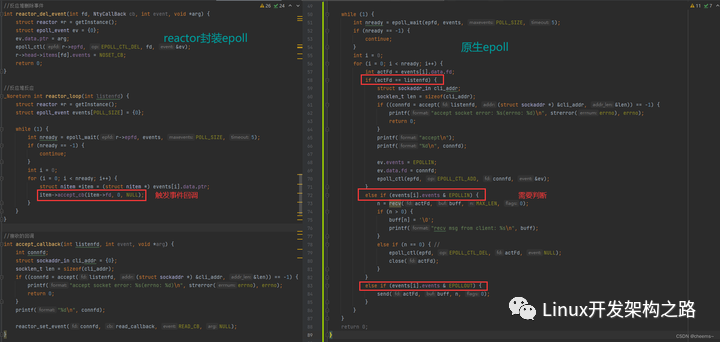
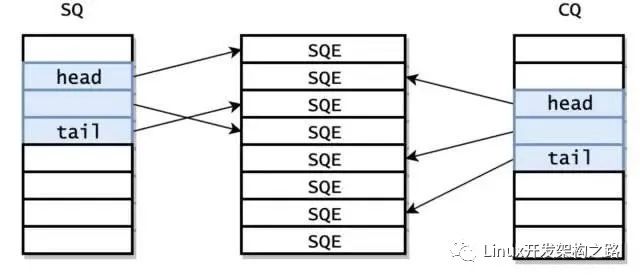
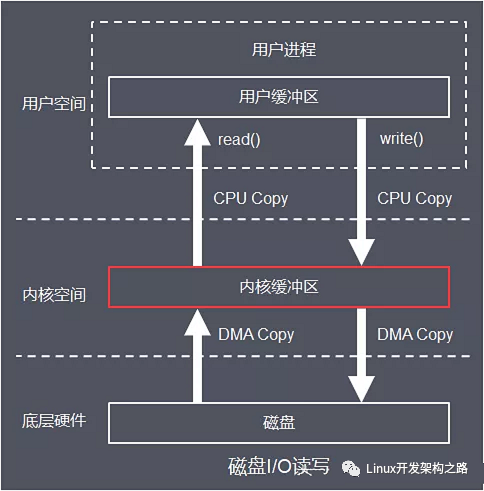
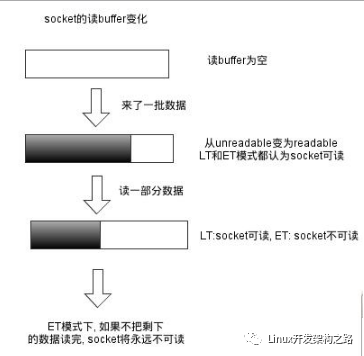
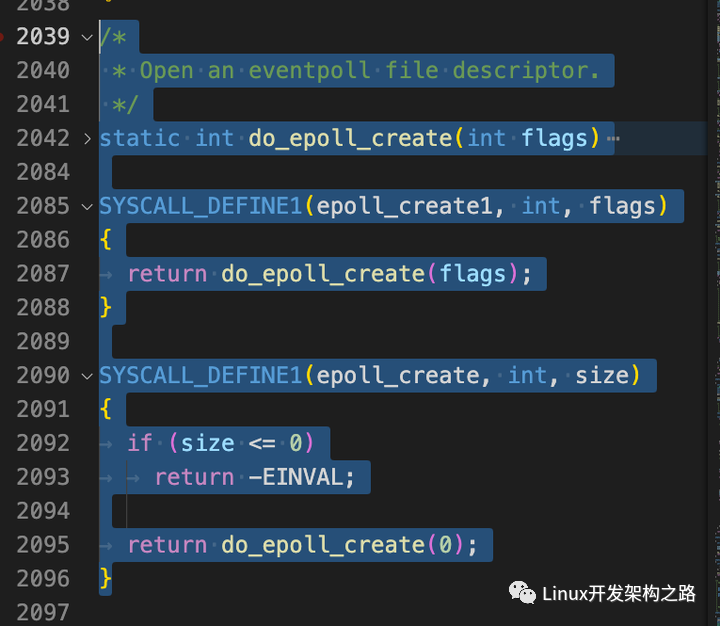
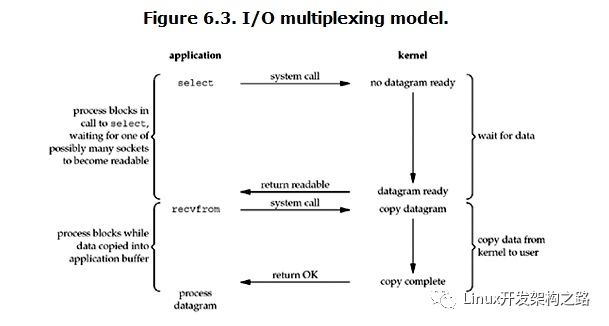
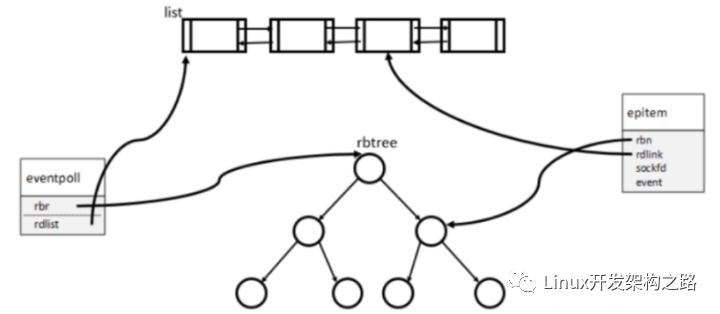


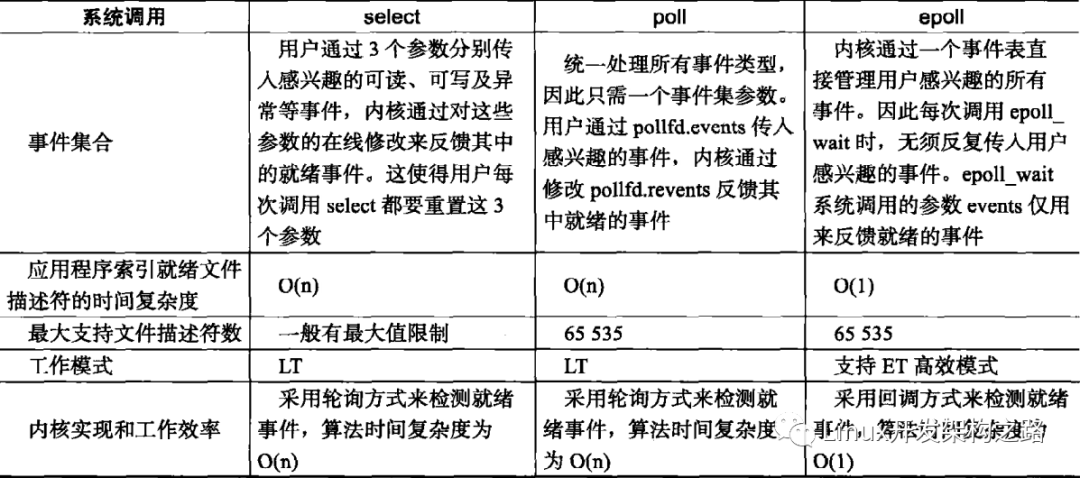
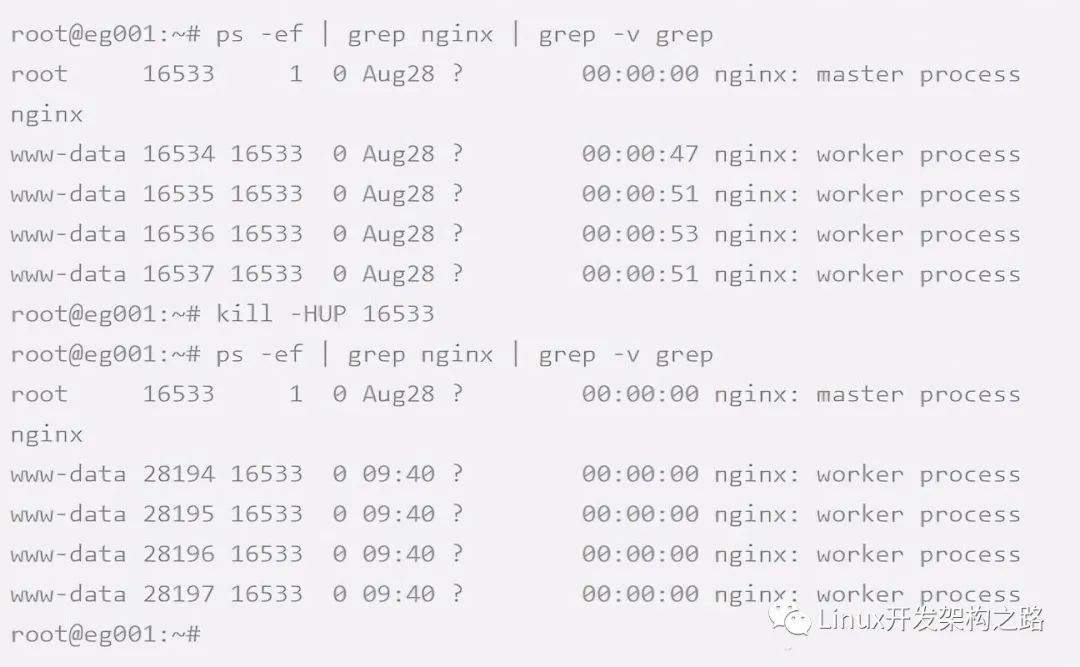
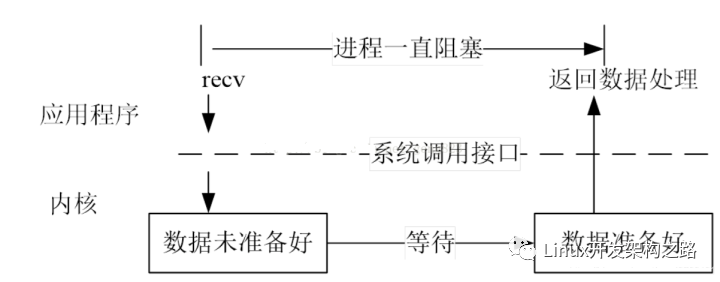
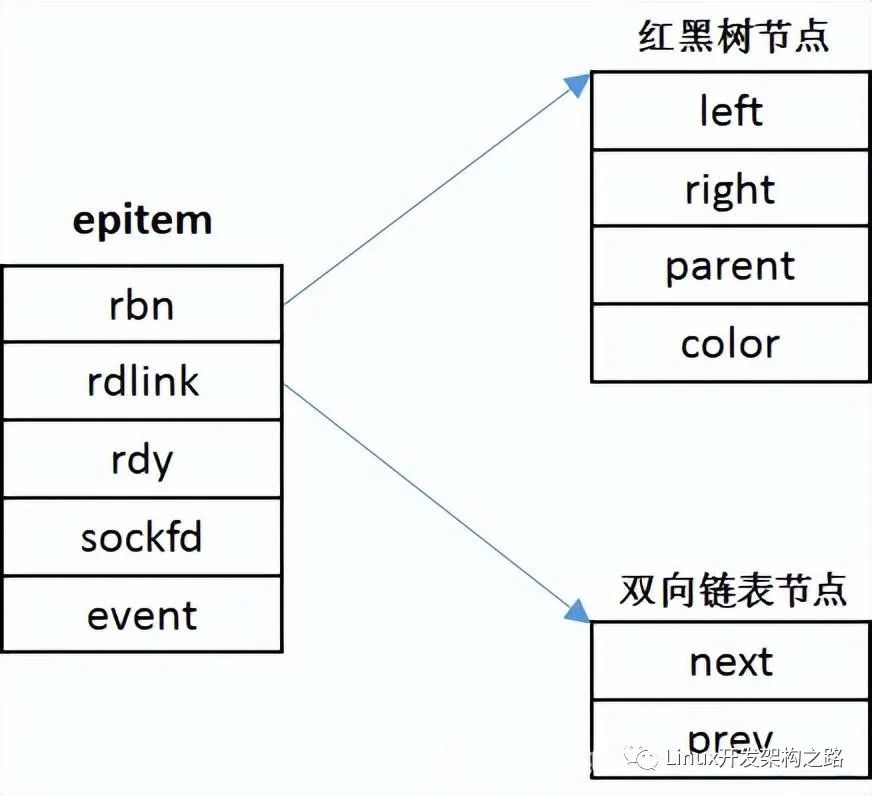











評論